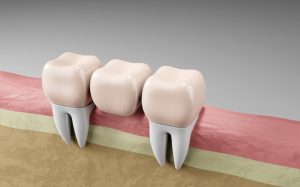A visit to the dentist is not something most people look forward to. The apprehension towards paying a visit to the dental office usually stems from a lack of knowledge about even the most straightforward dental treatments. This includes procedures like routine dental cleanings that are essential for maintaining good oral health but often get neglected. Learning in-depth about what to expect from a regular dental cleaning can help alleviate dental anxiety and make your visit to the dentist a more comfortable experience.

Table of Contents
Steps Involved in a Routine Dental Cleaning:
Initial Examination:
Before the actual dental cleaning procedure begins, the dentist or dental hygienist performs a thorough examination of the patient’s teeth and oral cavity. A small circular mirror is used to accurately visualize all regions of the mouth to check for signs of any gum disease. If a dental hygienist is performing the cleaning, and they detect any major problem, the patient might be referred to the dentist before moving ahead with the cleanup.
Removal of Plaque and Tartar:
When there is excessive accumulation of plaque on the surfaces of the teeth, it can harden to form tartar that cannot be removed by regular brushing or flossing. The process of professional removal of plaque and tartar at the dental office is known as scaling. A dental scaler is used to first remove more substantial chunks of tartar from the surfaces of the teeth and beneath the gum line. The dental scaler is an ultrasonic device that successfully removes all traces of plaque and tartar from every corner of the mouth. Patients will feel a gentle, scraping sensation but little to no discomfort. It is always good to let your dentist or hygienist know if you are experiencing excessive pain.
If there is inflammation of the gums present, there may be some amount of bleeding as well. This is entirely normal and resolves by itself. Occasionally, the dental hygienist may use hand instruments in addition to the ultrasonic scaler to clean some parts of the teeth. These smaller, hand-held instruments are capable of removing lower deposits from hard-to-reach areas of the mouth. Each tooth is scaled individually until it is spotless and smoothed out.
Polishing:
Once the teeth are free of plaque and tartar, the hygienist will polish the patient’s teeth with a prophylactic polishing paste and an electric brush to remove surface stains. The polishing paste is like toothpaste but with grittier consistency, which makes it more efficient at making your teeth smoother and shinier.
Flossing:
Professional flossing done by a dentist or hygienist is very similar to what patients are required to practice at home. Dental floss is used by the dental hygienist to remove plaque from between each tooth while guiding the patient about the proper techniques of flossing. Any areas of concern are also pointed out to the patient at this point that requires particular care during at-home cleaning.
Fluoride Application:
This is an optional step that may be carried out if the patient is prone to dental decay and cavities. Fluoride is usually present in toothpastes, mouthwashes, and even drinking water; hence, most people do not require additional fluoride treatment unless they are at severe risk of dental decay.
The fluoride treatment is usually done by placing a flavored fluoride gel into a mouth tray that fits over your teeth. It is left in place for a requisite period of time and then washed off. The fluoride varnish treatment is done the painting by the varnish onto the surfaces of the teeth. The varnish hardens when it comes into contact with saliva and doesn’t require washing off.
Professional Routine Dental Cleaning is usually advised to be carried out at least twice a year. Visiting your dentist regularly can help keep dental problems in check and avoid unnecessary and avoidable treatments and costs. Get in touch with us at Anoka Dental to know more about routine dental cleanings.




